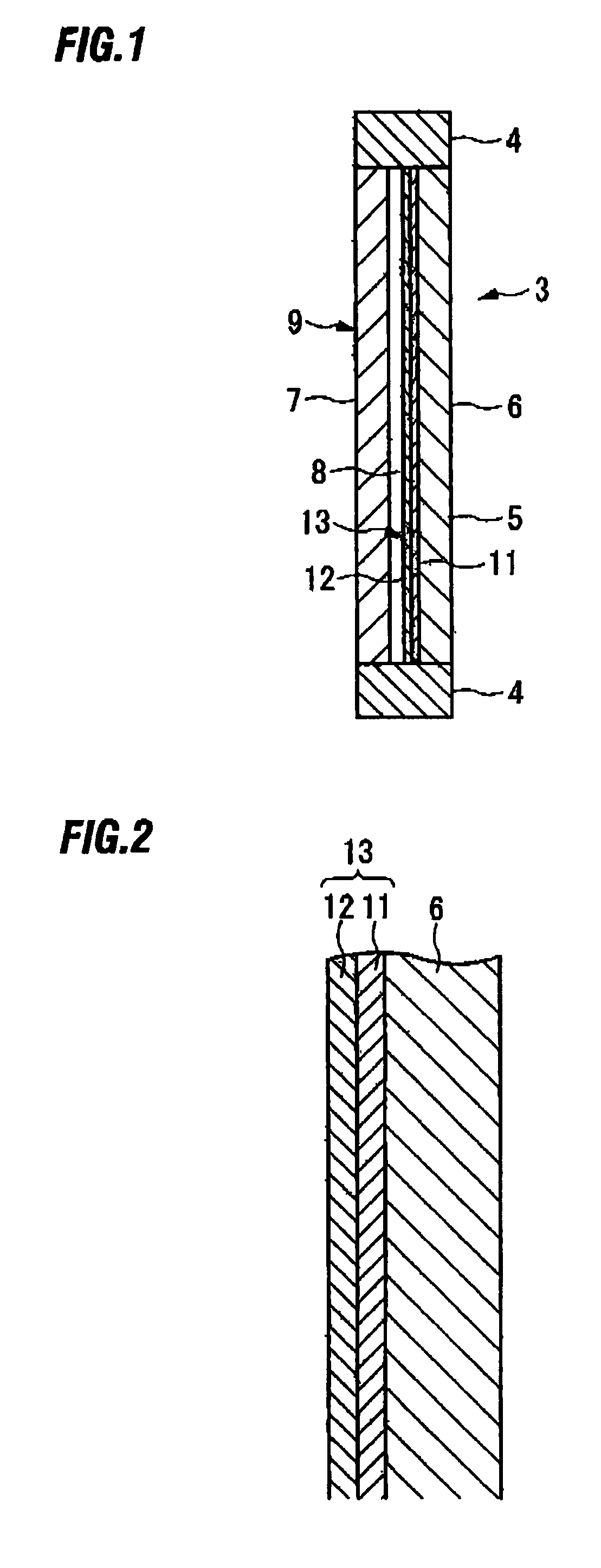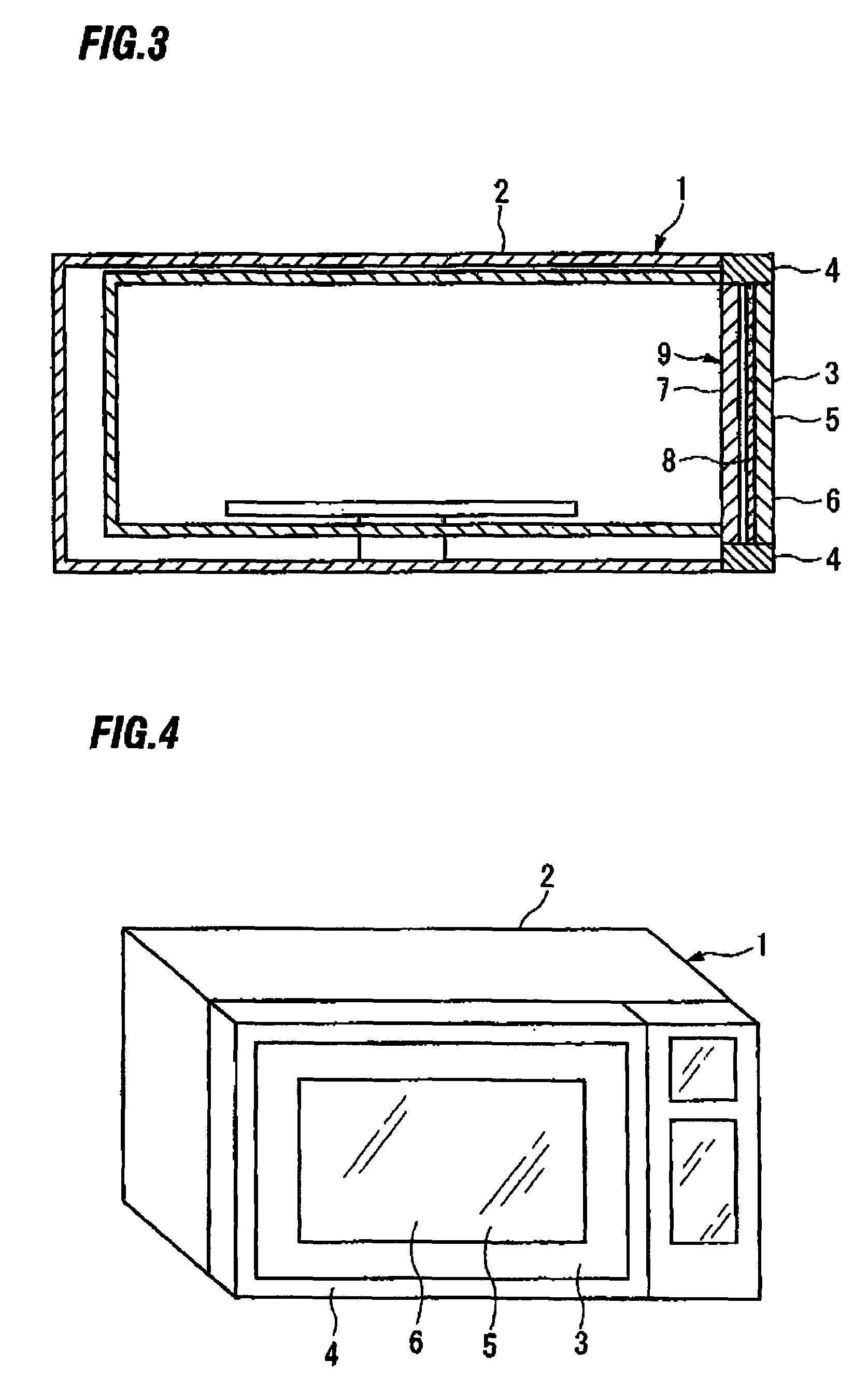Heating cooking device
a technology of heating cooking and heat ray, which is applied in the direction of heating types, stoves or ranges, household stoves, etc., can solve the problems of insufficient heating efficiency and degraded heat ray reflecting properties of films, and achieve enhanced heat ray reflecting properties, improved heating efficiency during cooking, and prevention of oxidation of first transparent conductive films
- Summary
- Abstract
- Description
- Claims
- Application Information
AI Technical Summary
Benefits of technology
Problems solved by technology
Method used
Image
Examples
experimental example 1
(1) Preparation of ITO Raw Material Solution
[0070]5.02 grams of indium chloride (III) tetrahydrate (InCl3.4H2O, formula weight: 293.24) and 0.21 grams of tin chloride (III) dihydrate (SnCl2.2H2O, formula weight: 225.65) were dissolved in 60 ml of ethanol to prepare an ITO raw material solution.
(2) Preparation of FTO Raw Material Solution
[0071]0.701 grams of tin chloride (IV) pentahydrate (SnCl4.5H2O, formula weight: 350.60) was dissolved in 10 ml of ethanol, to which 0.592 grams of a saturated solution of ammonium fluoride (NH4F, formula weight: 37.04) was added. The mixture was completely dissolved for about 20 minutes while being placed in an ultrasonic washing machine to obtain an FTO raw material solution.
[0072]As the first base material 6, a heat-resistant glass plate having a thickness of 2 mm was heated, and when the temperature reached 350° C., the ITO raw material solution was sprayed from a nozzle having a diameter of 0.3 mm at a pressure of 0.06 MPa. Upon spraying, the di...
experimental example 2
[0075]For comparison, a conductive base material was prepared by forming only an ITO film having a thickness of 1000 nm on a heat-resistant glass plate similar to the one used in Experimental Example 1.
[0076]Infrared radiation (heat ray) was radiated on the conductive base materials of Experimental Examples 1 and 2 using a mid-into lamp to heat the samples to 400° C. to evaluate the heat ray reflecting property of the samples. The heat ray reflecting property of the samples was evaluated by measuring reflectivity of light at a wavelength of 2000 nm using a spectro-photometer.
[0077]Furthermore, the electrical resistance was measured with the four-probe method, and the transmittance of the samples was measured using an ultraviolet and visible spectro-photometer with light of a wavelength of 550 nm to evaluate transparency.
[0078]The results are listed in Table 2. Table 1 lists the pre-heating measurements and Table 2 lists the post-heating measurements.
[0079]
TABLE 1Reflect-FilmTrans-iv...
experimental example 3
[0084]A heating cooking device having a conductive base material made of a first base material and a second base material was manufactured.
[0085]The first and second base materials were staked together without a gap therebetween.
[0086]The temperature of the outer surface of the first base material was measured when the internal temperature of the housing 1 was raised to 400° C. The results are listed in Table 3.
PUM
 Login to View More
Login to View More Abstract
Description
Claims
Application Information
 Login to View More
Login to View More - R&D
- Intellectual Property
- Life Sciences
- Materials
- Tech Scout
- Unparalleled Data Quality
- Higher Quality Content
- 60% Fewer Hallucinations
Browse by: Latest US Patents, China's latest patents, Technical Efficacy Thesaurus, Application Domain, Technology Topic, Popular Technical Reports.
© 2025 PatSnap. All rights reserved.Legal|Privacy policy|Modern Slavery Act Transparency Statement|Sitemap|About US| Contact US: help@patsnap.com



